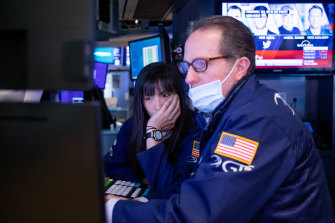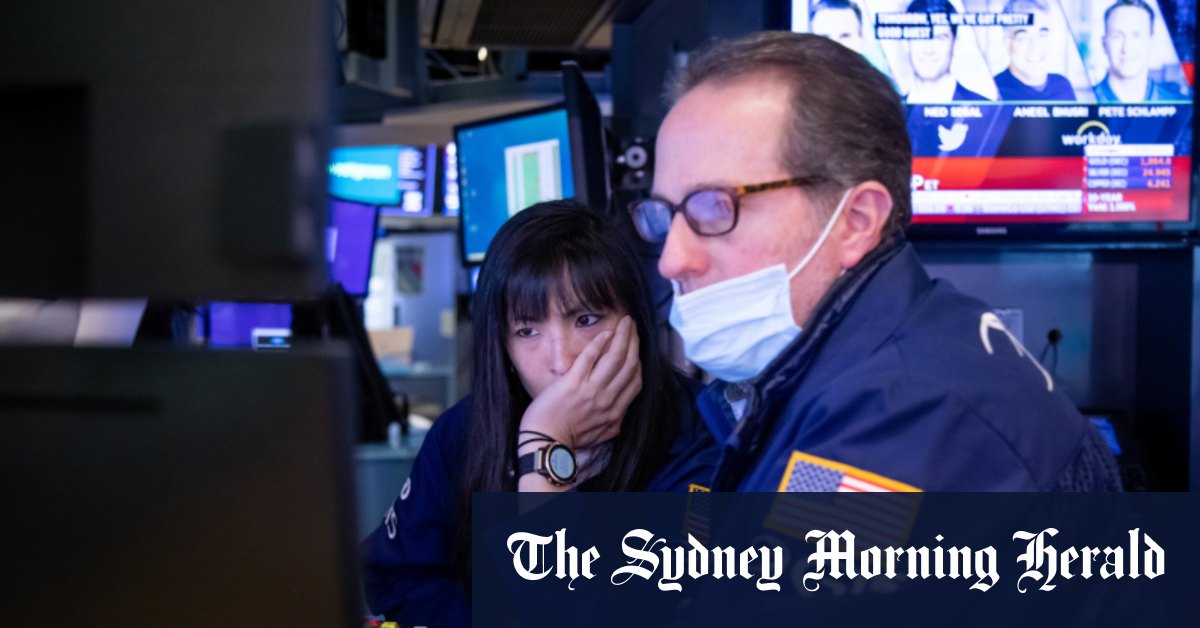All but one sector on the Australian sharemarket has failed in early trade, putting the local index’s seven-day winning streak at risk following a fall on Wall Street overnight.
At 10.20am AEST, the benchmark S&P/ASX 200 was trading 0.7 per cent lower at 6,947.8 points, with the utilities sector suffering the biggest drop, declining by 2.2 per cent. AGL Energy dropped 1.8 per cent while gas pipeline company APA Group lost 2.8 per cent after its gains earlier this week.
Major miners BHP, Rio Tinto and Fortescue were all down at the open by more than 1 per cent, while the big four banks also lost ground. The Commonwealth Bank opened 1.2 per cent lower, while Westpac was down by 1.3 per cent.

Wall Street has had a mixed session on Tuesday. Credit:Bloomberg
Despite the early fall on Wednesday, the local bourse has enjoyed a strong last month as investors adjusted to the reality of central banks increasing interest rates to tackle inflation. The onset of global interest rate rises had sent sharemarkets lower in the first half of the year, but the Australian index is now up 6.2 per cent over the past 30 days.
The technology sector was the only sector to add value in early trade on Wednesday, moving 0.4 per cent higher.
US stocks dipped on Tuesday on Wall Street following another day of meandering trading, as Wall Street debates whether the market’s strong recent run is the start of a turnaround or just a temporary blip.
The S&P 500 fell 27.44, or 0.7 per cent, to 4,091.19 after drifting between a loss of 0.9 per cent and a gain of 0.5 per cent through the day. The Dow Jones Industrial Average dropped even more, losing 402.23, or 1.2 per cent, to 32,396.17, largely because of a tumble for equipment maker Caterpillar. The Nasdaq composite held up better, but still slipped 20.22, or 0.2 per cent, to 12,348.76.
Treasury yields climbed through the day as concerns calmed a bit that the first visit by a US Speaker of the House to Taiwan in 25 years could spark conflict between the world’s two largest economies. Analysts also cited comments by Federal Reserve officials that suggested continued hikes to interest rates are coming in order to knock down inflation.
The S&P 500 is down nearly 1 per cent so far this week after spurting in July to its best month since late 2020. It was a rare winning stretch for the market, which has struggled this year under worries about the highest inflation in 40 years and rising interest rates from the Federal Reserve to combat it.
